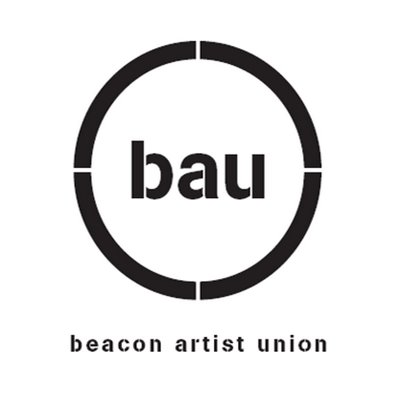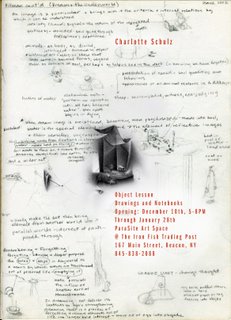 Mike Aquaviva, barber, 1972
Mike Aquaviva, barber, 1972
JOHN FASULO
"For the best part of the last twenty years, my career has been as a cameraman in the TV industry in NYC. Images flew by my eyes, some were worthy of capturing; most were not... But it was a great job and paid the bills. Photography, on the other hand, was always a passion.
At the age of nine or ten, my grandfather gave me a Kodak box camera that he had used for years. One of the first images that I captured with that simple camera was of a electric engine at the Harmon Shops of the NYC RR. My grandfather was a machinist there and we would often visit the shop on the weekend.
I have been photographing in Beacon for many years. My on going project and one that encompasses all of my work is entitled, " Beacon and Beyond: Photographs from Around the Corner and Around the World". While I have a passion for trains and the sea, I have taken some of my best images here at home. The photos of Mike Aquaviva, my barber when I was a young boy; Dave Knapp in his paint and glass store; Izzy Stone the jeweler; all capture a sense of time and place that is Beacon.
My photographs of trains in Hof, West in 1974 Germany also have a lot of meaning for me.
These images were taken in the fall of 1974. They portray the end of an era. This was the alst division of German railways to still be all steam. A year after these images were taken steam power came to an end and the facility at Hof was torn down.”

Dave Knapp's Paint Store

Izzy Stone, Beacon, NY 2005

Waitress, Alps Sweet Shop

John Spurr, iceboater, Tivoli Bay
 Poughkeepsie, NY, Rail Road Bridge Fire 1974
Poughkeepsie, NY, Rail Road Bridge Fire 1974
 Livonia, NY, The Engineer 1974
Livonia, NY, The Engineer 1974
An Era Ends in Germany, Hof, 1974
I first went to visit relatives in Germany in September of 1974. It was the first of many trips back to my roots. My grandfather had left Germany in 1923 along with my grandmother and my mother who at the time was a year old. An uncle that I met on that first trip told me, “You have to go to Hof”. When I asked why, I was told that Hof was the terminal for the last division of German Railways to still be all steam and that it would soon be gone with modernization of the line. I left the next day for Hof on an early morning train. It was an all day trip, with a change of trains and short lay-over in Munich. That evening my train entered the rail yard at Hof and snaked past yard engines and the roundhouse where at least six engines could be counted in the dim light. Steam was everywhere. The tracks glistened in the light rain that fell and whistles echoed in the distance. The air had a pungent smell of burning coal. In front of my eyes was a dream come true. Here in the middle of the 20th century were some of the last real working steam engines in the world. This was not a tourist railroad, this was the real McCoy! As my train pulled into the Station at Hof, I gathered my things together. I found a small Pension to spend the night at. As I tossed and turned in my bed, the sounds of the nearby rail yard kept me awake. I listened as long freights moved through the yard and disappeared in the night. The next morning I dressed and ate quickly. I walked back to the train station and found out that the division Superintendents office was a short walk away. When I entered the office, I was confronted by a clerk asking me what I wanted. I explained that I had come a long way and wanted permission to photograph the steam engines in the yard... I was told, rather bluntly, that, “it is verboten, you can’t go in the yard, it’s too dangerous’. That seemed to be the end of the conversation as far as this surly clerk was concerned. I, however, had not come all this way to be turned away by a nasty clerk. Back at the train station, I sat on a trackside bench and pondered what to do next. A railway policeman came up to me and asked about my camera equipment, and if I was interested in photographing the trains. I told him about my encounter with the railroad clerk. He frowned and told me to follow him. We went into the superintendent’s office and passed the clerks desk without stopping. I gave him a glance and a slight smile. Upstairs, we entered the superintendent’s office. I was introduced and was welcomed with coffee and cake. It seems that he was a big fan of the New York Central Railroad and was delighted to find out that I had come all this way to take photos of his steam engines. We talked about the railroad here and I told him that my grandfather was a machinist for the NYCRR and had worked on the engines that pulled the famous 20th Century Limited. After about a half hour, the head machinist was called and asked to give me a tour and to be allowed to photograph in the train yard. I had a wonderful tour of the roundhouse. After about twenty minutes, I was told that I could take all the photos that I wished and go where I pleased. But I was told, “Remember, this is a working rail yard. ... Be careful”
With that, I was on my own. I spent the day taking photos and talking with the workers in the roundhouse. It was a day that I wouldn’t forget. It seemed that I was transported back in time to another era. All around me, steam prevailed. It could have been Germany in 1930. Not long after my visit, the facility was demolished and the last scheduled steam on German railways vanished forever. Steam power, except for tourist railway and smaller, narrow gauge lines had disappeared from the landscape.
In 1995, I was in Germany again and not far from Hof. I decided to take a look at what had become of the railyard there. It was unrecognizable. The roundhouse and turntable were gone, as was the coaling station and watering towers and ash pits. In place was a modern steel diesel shed. I Left without taking a photograph. Returning had been a mistake. I was comforted, however, with the knowledge that more than twenty years before I had captured images that would endure.
In 1998, after months of discussions with the director of the German Railway Museum in Nuremberg, the museum purchased a number of photographs from my series in Hof. They were some of the last images taken that portrayed the end of the steam era at Hof. I had been in the right place at the right time. Like my friend and mentor, American photographer David Plowden, I was, ‘One step ahead of the wrecking ball’.
A footnote. I continue to photograph railroads. Now that I am retired from the television industry, I have more time to devote to photography. I traveled across Canada by rail on the Canadian Pacific in the 70’s, and recently on Amtrak to Montana. I now have a digital camera but still prefer to shoot black and white and work in a traditional darkroom.
John Fasulo
2005

Hof, West Germany 1974

Hof, West Germany 1974

Hof, West Germany 1974

Hof, West Germany 1974

Fishkill Creek, Beacon, NY 2006














